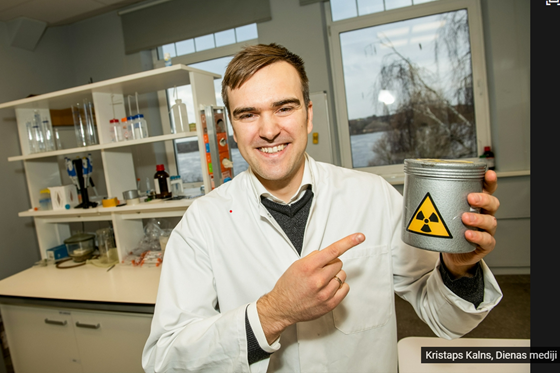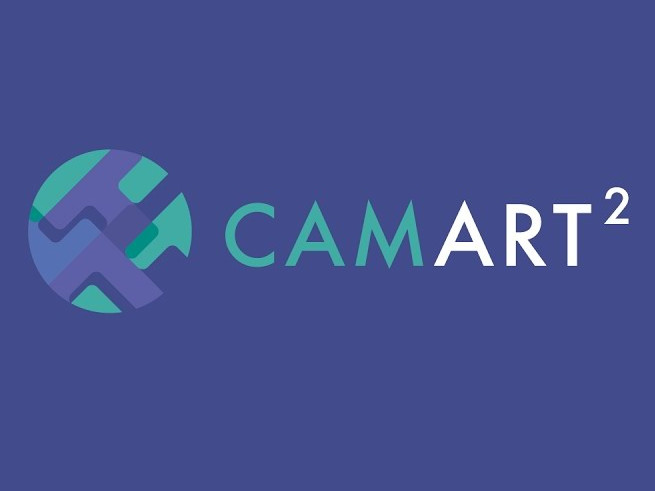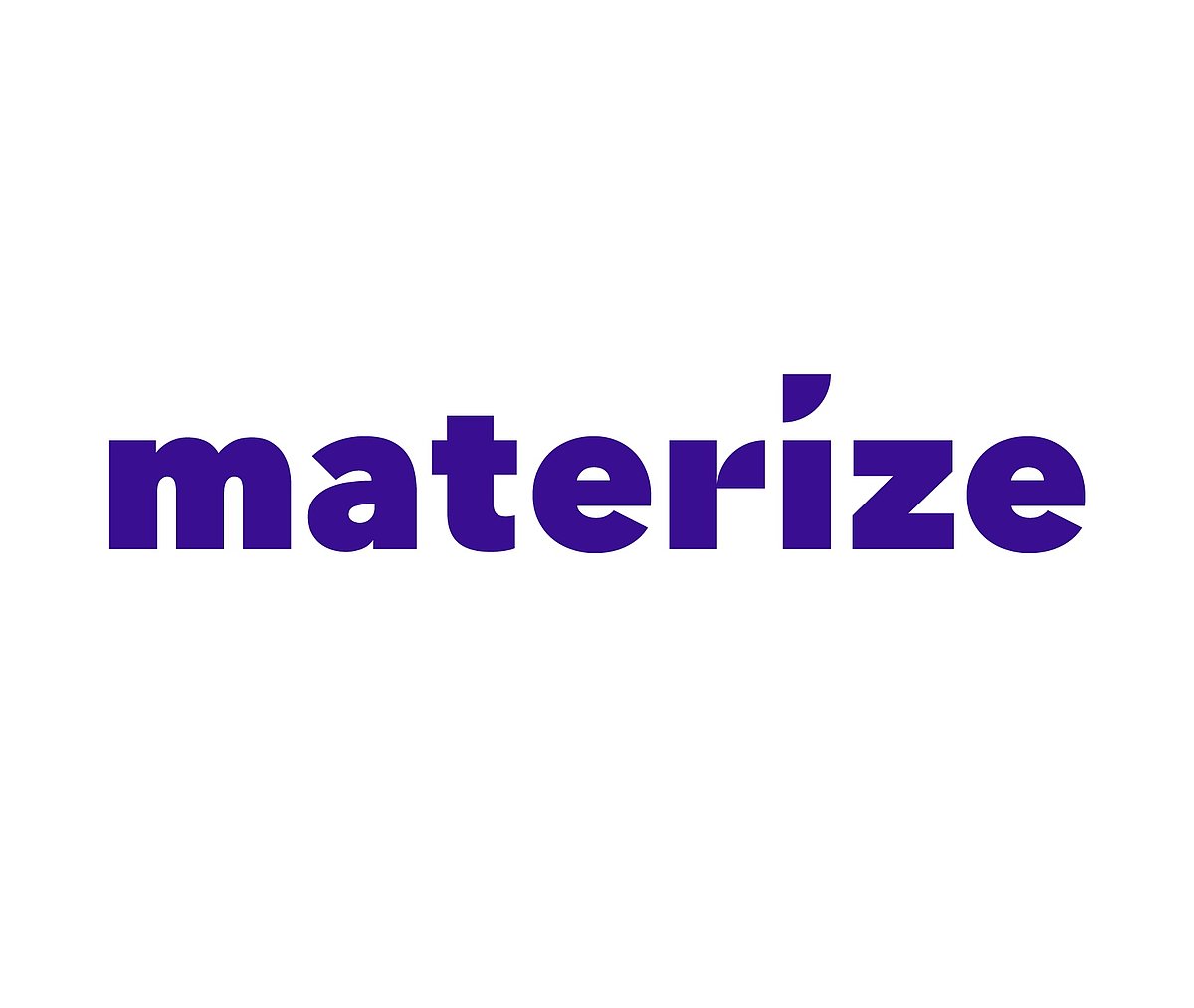On February 3, the national daily newspaper “Diena” published an article about one of the ISSP UL’s leading researchers of the young generation and the head of the Laboratory of Optical Materials, PhD Aleksejs Zolotarjovs.
Aleksejs explains that his laboratory balances between different disciplines. Materials are synthesized chemically, but physicists then measure, analyze and study them. Aleksejs is convinced that the cooperation of different researchers gives more fruitful and innovative results. In the article, he compares a scientist’s work and passion to an artist’s creativity. He talks about his path to becoming a scientist and his love for experimental work and research that does not always go smoothly. Aleksejs explains that he represents the generation of scientists between the older generation and the younger one. There is a lack of middle-aged researchers, as 30 and 20 years ago, young people rarely chose to become scientists; it was unpopular then. Zolotarjovs reveals that even now when he sometimes introduces himself as a scientist, people are surprised and ask if there is any science in Latvia.
Aleksejs reveals some differences between scientific work in Latvia and other countries. For instance, in Western Europe, the science budget is larger, the institutions have a long history, the scientific structure is more complete, and access to expensive scientific equipment is almost unattainable for a student. In Latvia, on the other hand, laboratory equipment is now as good as in Western countries and is available to everyone whenever needed. Consequently, research results can be obtained faster. The biggest drawback is the constant search for project calls and financing, which puts the scientific environment in Latvia in conditions of reasonable survival, while in Germany, for instance, researchers can commit more fundamentally to a topic in the long term.
Constant alert mode of search for financing makes many young and talented researchers weary, and they choose to continue their careers somewhere abroad. Aleksejs Zolotarjovs is the head of the Laboratory of Optical Materials. His laboratory is one of the youngest at the ISSP UL; the average age of researchers working there is under 40. He tries to attract students to his laboratory, which is challenging. Aleksejs is confident that to convince the young generation of researchers to stay in Latvia, it is essential to create an easy-to-work atmosphere so that they can express emotions, generate ideas, and get help; instead of cemented hierarchy and subordination there is a free atmosphere and a modern work culture in his laboratory.
Talking about research, Aleksejs says that if the research bears fruit, there’s enough motivation for a long time. \"Work in science is very creative, like painting for an artist. We can \"paint\" in a certain direction, but what we want. Unlike business, where you must think about profit, fulfil requirements, or solve technical problems. If you want to solve problems that require thinking, science is almost the only way,” says Aleksejs. He continues that scientists, just like artists, have many unfinished \"paintings\". As soon as the process starts to go smoothly, getting things done doesn’t seem too compelling anymore.
Aleksejs also talks about the biggest research successes. Luminescent coating material capable of accumulating energy from ultraviolet and ionizing radiation and emitting it as light, providing long-lasting afterglow, has been known for a long time. But until now, its creation was a messy, complicated and expensive process that required much time and energy and harmed nature. Aleksejs and his colleagues, for the first time in the world, used the plasma electrolytic oxidation method to develop such a coating, which until now has been used to create protective coatings for ships and airplanes. Researchers studied this method in the laboratory, adapted it and proved that it could also be used to make something more complicated - cheaper, faster and on a larger scale.
For his research, Aleksejs Zolotarjovs received the Ludvigs and Māris Jansons prize in physics awarded by the Latvian Academy of Sciences last year. Cars or road signs can be covered with luminescent material - they would glow in the dark and make traffic safer. However, Aleksejs says that although this usage is more understandable and appealing in the eyes of the public, another one is much more valuable and necessary. The research results can be used for radiation detection in hospitals and other institutions where people have to work near ionizing radiation (X-ray, etc.). This method could be used in long-lasting coatings allowing to turn an entire room wall into a dosimeter.
Another research area for Aleksejs and his colleagues is smart buoys within the scope of the Mission Sea 2030 project. Such buoys could be placed in seas, lakes, or oceans to obtain online data on water quality and pollution close to laboratory measurements. This technology will be beneficial in the future, for example, for fish farms or municipalities that need to control beach water quality. The smart buoy provides quality data very close to the one obtained in the laboratory. Still, it can monitor the water non-stop and signal if something is wrong, thus allowing the authorities to take the necessary measures immediately. Now such monitoring is performed only in the lab, which is usually done once a month. The device is to be ready at the end of this month.
Aleksejs summarizes that science is unimaginable without trials and errors. Sometimes it means that the research done over the half-year period is useless due to some minor calculation mistake or the equipment is not as powerful. Nevertheless, Aleksejs advises always to dream big and figure out how to achieve things that are hard to imagine.
“Diena” (The Day) is a Latvian language national daily newspaper in Latvia, published since 23 November 1990. It is one of Latvia’s largest daily periodicals and used to be considered a paper of record.
The whole story is available in printed format and online to the subscribers.



